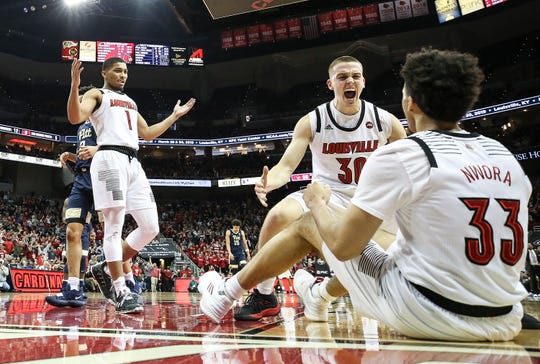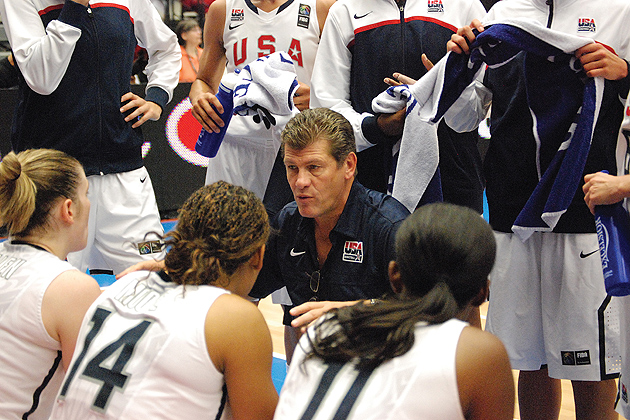TELLING vs TEACHING | Being a Great Teammate
We all want our players to be great teammates. We are constantly telling our players to put the team first, but are we intentional about teaching players how to do it? If you are teaching players how to be a great teammate, then it should be explained, players should learn how it sounds, as well as what it looks like to put the team first. Below are five steps to create great teammates in your program.
EXPLAIN WHAT IT MEANS TO BE A GOOD TEAMMATE
If this is important to your program, then it needs to be outlined within your core values. For example, two of our core values connect to being a great teammate. The first is RELATIONSHIPS. We talk about what it means to develop relationships and how it connects everyone within our program. The second is SERVANT LEADERSHIP. The purpose is to seek ways to serve others, which includes our teammates. By connecting being a great teammate to two of our core values, it empowers the fact that being a great teammate is more than an expectation. It is who we are and what we do.
TEACH PLAYERS WHAT IT SOUNDS LIKE TO BE A GREAT TEAMMATE
One of our favorite activities to do is the “Rock, Paper, Scissors Challenge.” In this activity, players do a best of three series of the game Rock, Paper, Scissors. The winner finds another teammate to play against. The loser becomes a “HYPE GUY” for the winner. You continue this until you have two players remaining in the Championship. At that point, they have a team of “HYPE GUYS” behind them. It creates a fun environment. At the conclusion of the Championship, we let our players know that we expect our bench to be full of “HYPE GUYS.” Now that we have taught our players what it sounds like to be a great teammate, it can be an expectation for the players.
Is your bench quiet/lacks enthusiasm? Stop complaing & TEACH THEM!
Great Exercise: You lose = cheer for teammate who beat you.#CultureWins pic.twitter.com/M0GBsQJaWE
— Doug Brotherton (@CoachBrotherton) June 10, 2017
TEACH PLAYERS WHAT IT LOOKS LIKE TO BE A GREAT TEAMMATE
Similar to teaching players what it sounds like to be a great teammate, this lesson allows us to hold players accountable. The best tool for teaching players what it looks like to be a great teammate is film. We will use clips from other teams at the beginning of the season. As the season continues, we will use clips of our own team. It could be all four players sprinting to help up a teammate who has gotten on the floor. It might be our bench celebrating a positive play. It could be a teammate giving positive reinforcement to a frustrated teammate. Too many coaches want to point out the negative behavior on the bench. While this is a form of accountability, it is also highlighting the behavior that we do not want. It can be much more powerful to show positive examples, and then find a way to reward that behavior. Another way to teach players what it looks like to be a great teammate is to meet them on their level. In this case, we are talking about social media. A tweet or instagram post that promotes being a good teammate will reach some of your players better than a lecture. A social media post is a great way to utilize messaging that players want to absorb.
A senior captain giving an hour of her free time to tutor/help a teammate! #Leadership #Proud #LadyVikingsHoops pic.twitter.com/080zXPk6j3
— Doug Brotherton (@CoachBrotherton) November 18, 2014
SHARPEN THE SWORD
Like a fundamental skill, being a great teammate requires repetition. If you want your players to be great teammates, you must continue to “sharpen the sword,” to avoid the message becoming dull. Like any fundamental skill that we teach, you should be constantly looking for positive examples to reinforce your expectations.
ACCOUNTABILITY
After you have taken the steps to teach and reinforce the expectations of being a great teammate, it is time to hold your players accountable. One common mistake is that coaches hold their bench players more accountable for this behavior. While all players must be held accountable, your best players must be held to the highest standard. This will resonate with your players and it highlights the importance of being a great teammate.
Go Follow Dynamic Coaching Tools on Social Media: @DynamicCoaches




